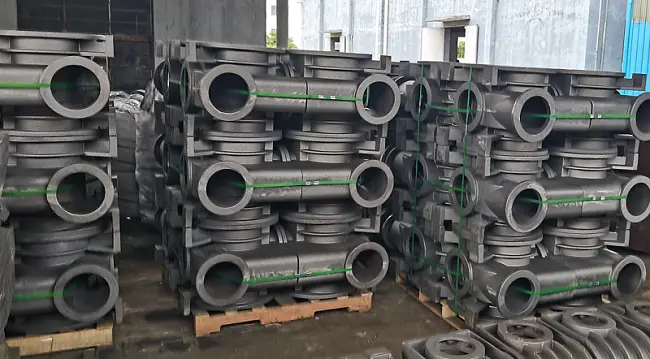
Knowledge
Gear Reducer Housing (Part Two)

Gear Reducer Housing, also named Gear Reducer Casting, the Main Production Processes details are as follows:
Processes are closely related to materials and structures:
1. Casting (Applicable Materials: Cast iron, cast steel, cast aluminum alloys):
- Sand Casting: The most widely used casting method, especially suitable for single-piece, small-batch, medium and large-sized, and complex-structured gray cast iron/spheroidal cast iron shells. Wooden or metal models are used to shape in sand molds.
- Metal Mold Casting: Uses metal molds to pour molten metal (commonly aluminum alloys). The castings have good quality (high precision, dense structure), and relatively high efficiency. However, the molds are expensive, making it suitable for medium and small-sized shells in certain batch sizes.
- Die Casting: Molten aluminum alloys are rapidly injected into metal molds under high pressure and cooled to form. It is highly efficient, precise (up to IT11), has a high surface finish, and can produce thin-walled and complex structures. It is the mainstream production process for aluminum alloy shells, especially suitable for large-scale production (annual output in the tens of thousands). The cost mainly lies in the expensive molds.
- Investment Casting: Used for very complex shapes and high-precision requirements of special alloy steel or high-temperature alloy shells. The cost is very high.
2. Machining:
- Main machining areas:
(1) Split surface: For split housing, this is the most critical sealing surface. It requires precise milling or even grinding to ensure flatness and roughness Ra. It is usually designed with oil grooves (for oil return) and grooves for installing gaskets/seals.
(2) Bearing holes: The parts that require the highest precision and smoothness. Hole diameter tolerance (H7), roundness, cylindricity, and surface roughness Ra are key. Usually, turning/boring is needed. For split housing, it is necessary to ensure the concentricity of the two halves after assembly. If there are multiple holes, parallelism and center distance also need to be guaranteed.
(3) End cover mating surface, locating tenon.
(4) Base, flange surface: Installation flatness.
- Machining equipment: gantry milling machine, floor boring machine/processing center, lathe, etc.
Summary of selection strategy:
· Large volume & medium and small-sized & lightweight/heat dissipation priority: Cast aluminum alloy housing is the first choice (especially for step/servo motor gearboxes and automation fields).
· General industrial fields (large, medium and small-sized): Gray cast iron (HT250) split housing made by sand casting is the mainstream and foundation. It offers a perfect balance of cost, performance, and processability.
· High strength/toughness requirements (heavy load, impact): Ductile iron (QT400-600) (sand casting) or in special cases, cast steel (ZG series) (sand casting, with a significant increase in cost).
· Extra large/extra heavy/single-piece small batch/special structure: Steel plate welded structure is the only feasible solution.
· Integral type: Only seen in simple-structured small gearboxes.
A deep understanding of the structure and materials of the gearbox housing is the foundation for ensuring a reasonable and efficient casting process design and is also the key to producing high-quality products.
China Vigor has more than 20 years of experience, a strong technical team, and production capabilities in cast iron gear reducer housing and gear reducer casing. If you have any questions, demands, related parts development, or to improve your supply chain, please feel free to contact us info@castings-forging.com



